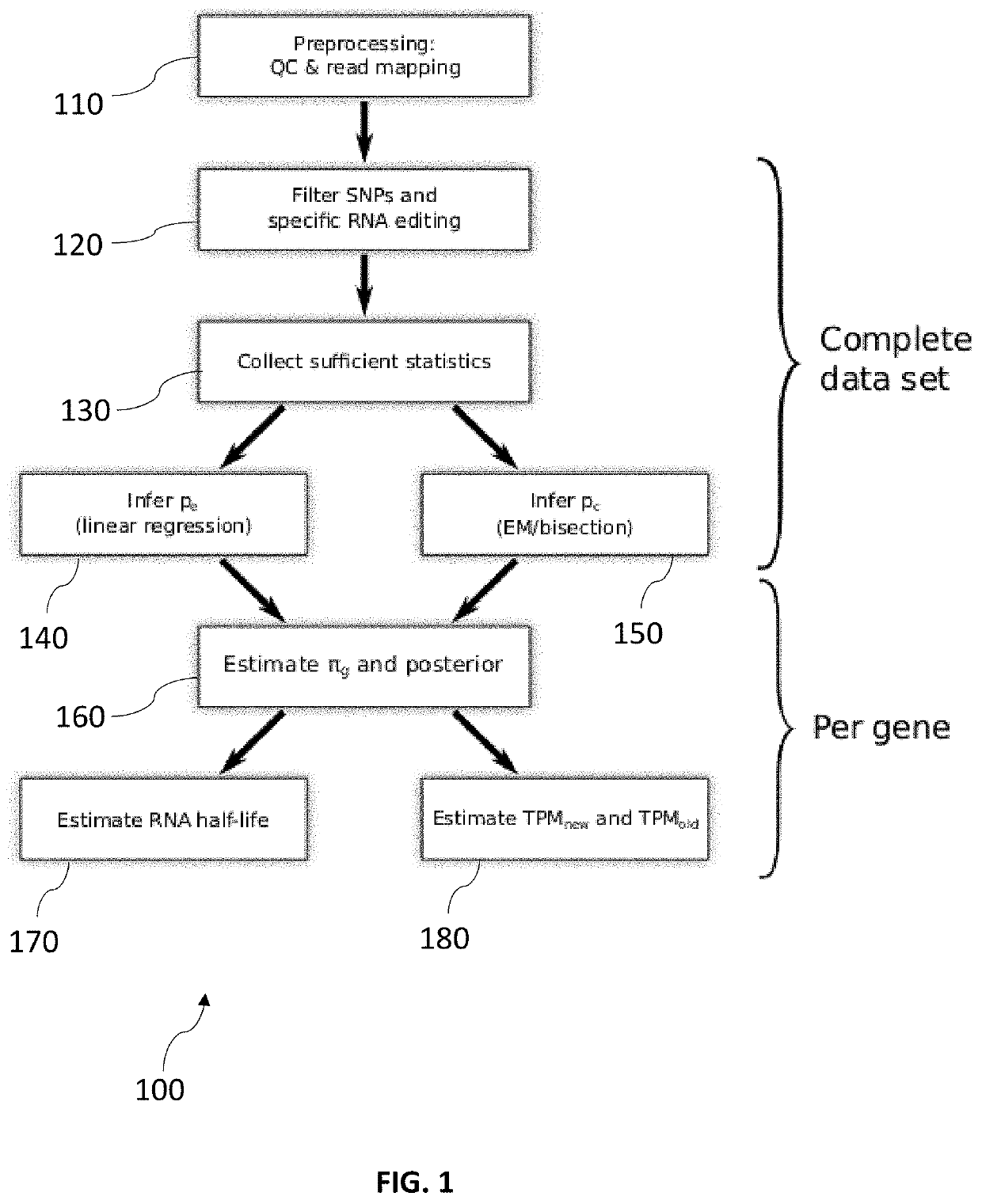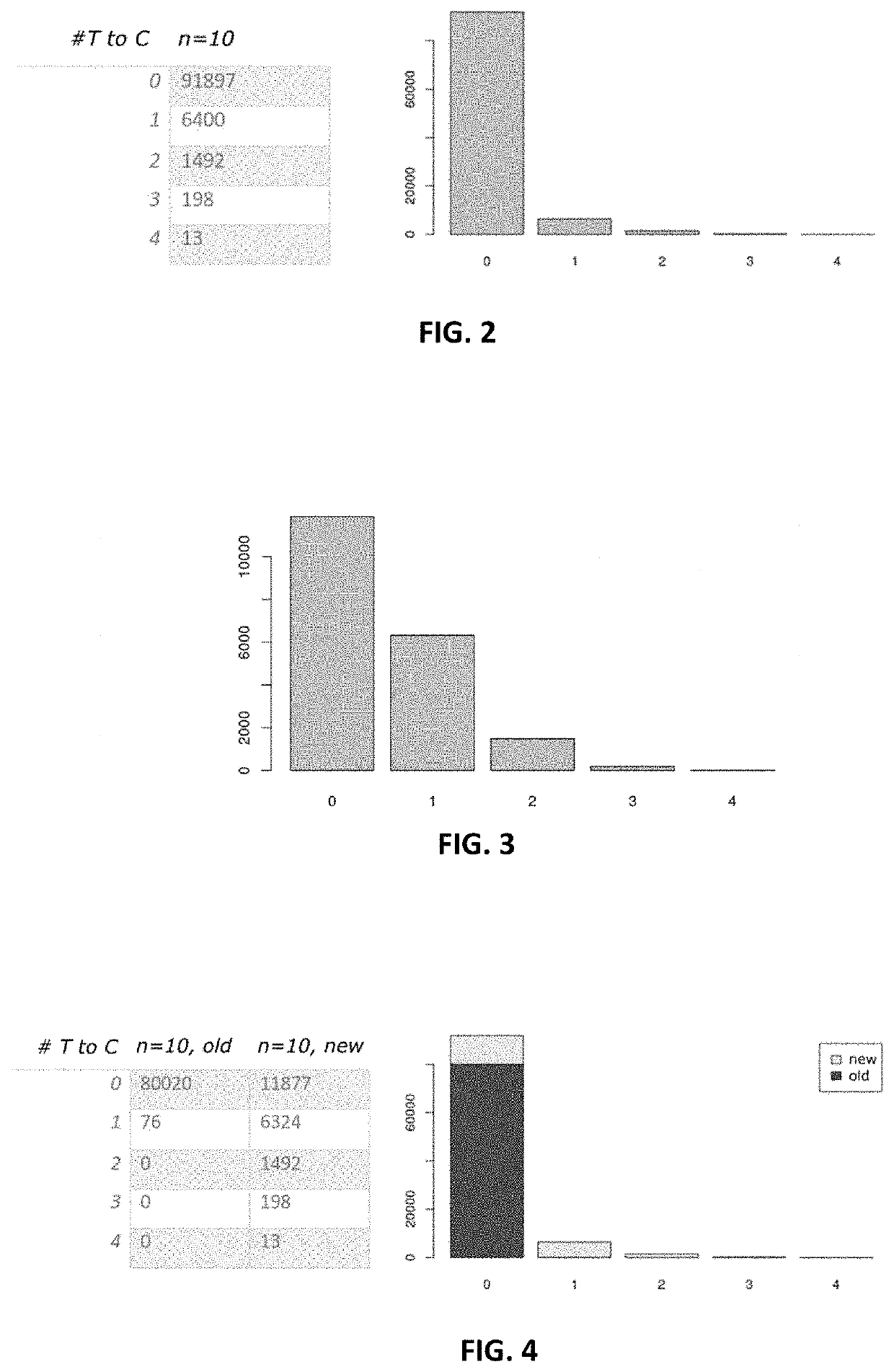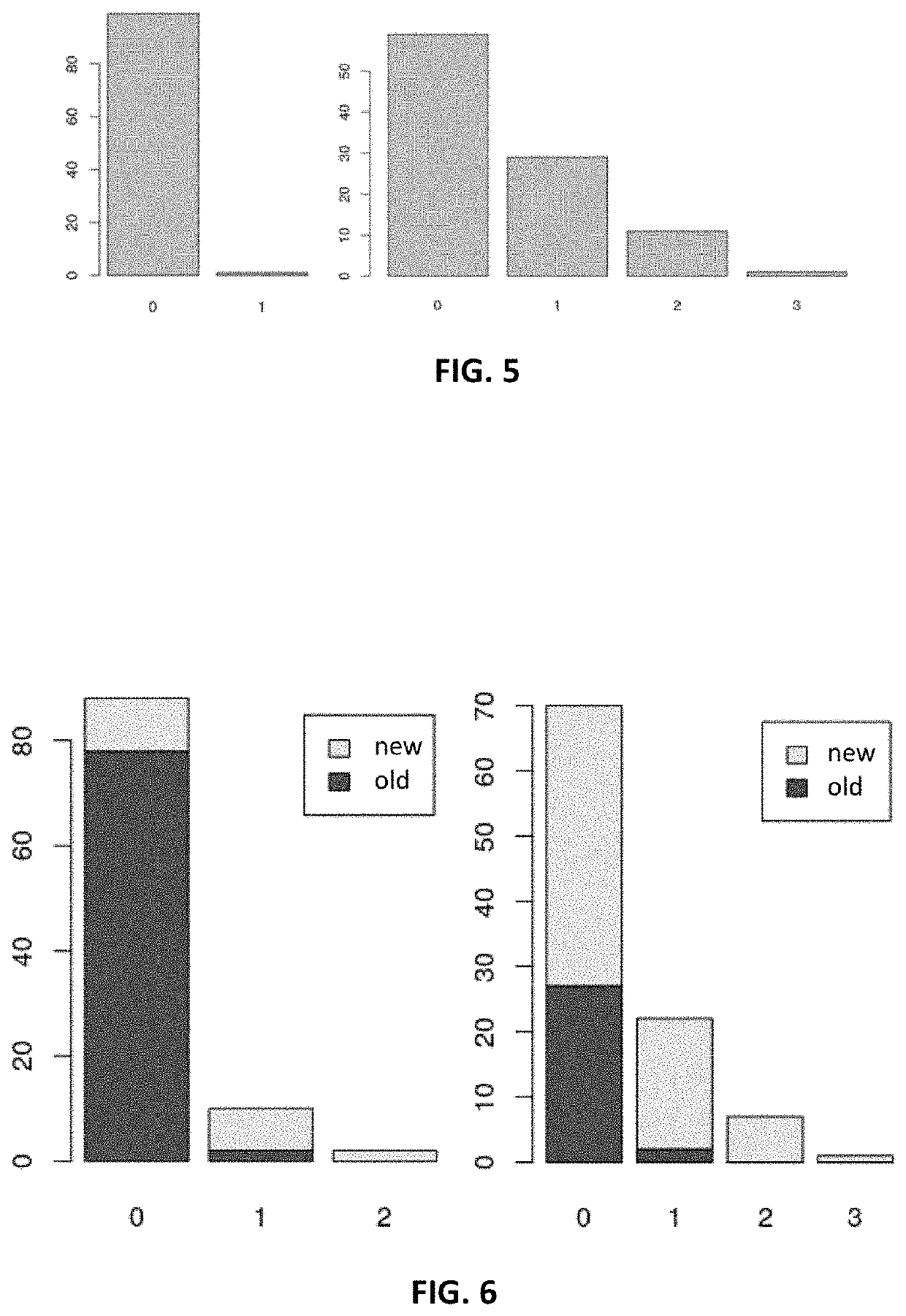Method for determining a quantification of old and new RNA
a technology of quantification method, which is applied in the field of methods for determining old and new rna quantification, can solve problems such as severe bias in any analysis
- Summary
- Abstract
- Description
- Claims
- Application Information
AI Technical Summary
Benefits of technology
Problems solved by technology
Method used
Image
Examples
Embodiment Construction
[0075]FIG. 1 is a flow chart of a method 100 for determining a quantification of old and new RNA for a genomic entity.
[0076]In a first step no, preprocessing is performed. This may involve quality control and mapping of reads to the genome. Mapping of the reads from sequencing may be performed with STAR. In contrast to Next-Gen-Map, STAR is a widely used and very fast software, but not directly designed for T after C mismatches. However, with the help of simulation experiments we were able to show that the special position of T to C in Next-Gen-Map has no effect on the results obtained.
[0077]In a second step 120, SNPs and specific RNA editing is filtered. In particular, positions may be filtered that indicate SNPs (or generally: positions with frequent T to C mismatches that are not due to 4sU conversion). The method may filter all positions where a statistical test rejects the null hypothesis that the number of observed mismatches is not greater than expected at an assumed maximum ...
PUM
| Property | Measurement | Unit |
|---|---|---|
| Time | aaaaa | aaaaa |
| Decay rate | aaaaa | aaaaa |
| Ratio | aaaaa | aaaaa |
Abstract
Description
Claims
Application Information
 Login to View More
Login to View More - R&D
- Intellectual Property
- Life Sciences
- Materials
- Tech Scout
- Unparalleled Data Quality
- Higher Quality Content
- 60% Fewer Hallucinations
Browse by: Latest US Patents, China's latest patents, Technical Efficacy Thesaurus, Application Domain, Technology Topic, Popular Technical Reports.
© 2025 PatSnap. All rights reserved.Legal|Privacy policy|Modern Slavery Act Transparency Statement|Sitemap|About US| Contact US: help@patsnap.com



